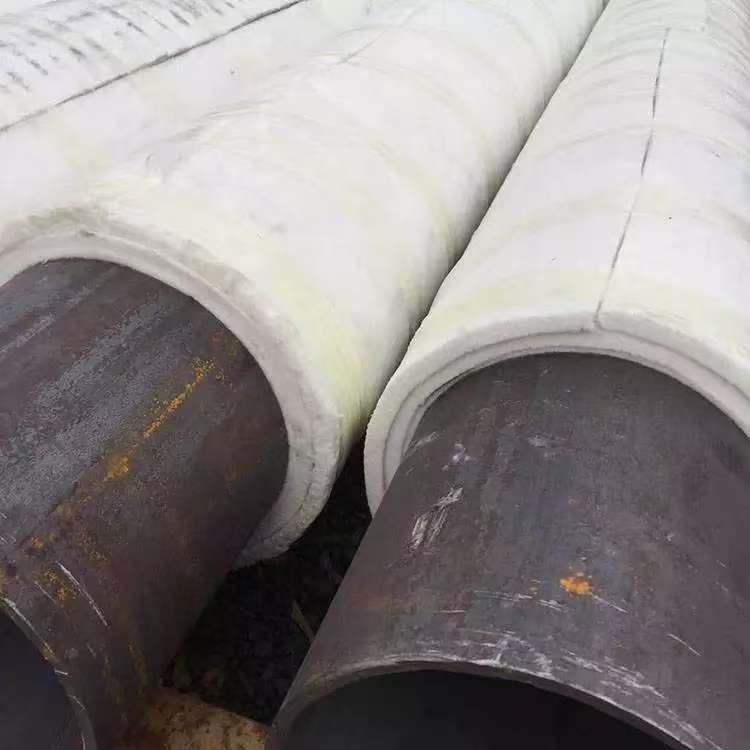Aerogel Revolution in Winter Heating: Nanoscale Insulation Driving Urban Energy Efficiency
2025-03-28
Aerogel
China’s vast central heating networks lose billions in energy annually through outdated insulation. Aerogel felt—delivering 7× the performance of rock wool at half the thickness—slashes heat loss by 60%, cuts maintenance cycles, and aligns with “dual carbon” mandates. This exploration traces aerogel’s nanoporous physics, real-world retrofits in Harbin and Beijing, policy tailwinds, and global scalability, revealing how a space-age material is warming homes while cooling emissions.

Every winter, China’s northern cities pulse with steam: 10 billion square meters of heated space, 600,000 km of pipelines, and an energy bill exceeding 200 million tons of coal equivalent. Yet up to 30% of that heat vanishes before reaching radiators—seeping through cracked rock wool, sagging glass fiber, and corroded jackets. In Harbin, where −30°C nights are routine, a single uninsulated elbow can bleed enough warmth to heat a small apartment.
Aerogel felt isn’t just patching leaks; it’s rewriting the thermodynamics of urban heating. Born in NASA labs to shield Mars rovers, this “solid air” now blankets district pipes from Inner Mongolia to the Bohai Rim, proving that nanoscale engineering can solve macro-scale crises.
The Hidden Toll of Legacy Insulation
Traditional materials fail systematically:
Rock wool: Absorbs moisture, sags under gravity, conductivity rises 50% when wet.
Glass fiber: Compresses over time, creating cold bridges; A-class fire rating but sheds irritants.
PU foam: Ages in UV, emits VOCs, flammability limits use near boilers.
A 2024 audit of Beijing’s secondary networks found average heat loss at 18%—equivalent to burning 1.2 million tons of extra coal yearly. Retrofit costs? Often prohibitive, requiring full excavation and weeks of downtime.
Aerogel’s Nanoscale Edge
Aerogel felt—silica networks with 20–40 nm pores—traps air so tightly that gaseous conduction drops below 0.004 W/(m·K). Total conductivity: 0.015–0.018 W/(m·K) at ambient pressure, 7× better than dry rock wool (0.035 W/(m·K)).
Key enablers:
Hydrophobic silylation: Contact angle >150°, zero water uptake even after 1,000-hour submersion.
Flexible backbone: Polyimide-crosslinked aerogel compresses 80% and recovers, wrapping valves without cutting.
A1 fireproofing: No flame spread, zero smoke (GB 8624-2012).
A 10 mm aerogel blanket equals 70 mm rock wool—yet weighs just 0.8 kg/m². Installation? One crew wraps 300 m of DN200 pipe in a single shift, no scaffolding.
Field-Proven Impact
Harbin District Heating Retrofit (2023–2024)
Scope: 42 km secondary lines, 1,200 manholes.
Before: 22% heat loss, surface temps >60°C (burn risk).
After: 8 mm aerogel felt + aluminum jacket. Heat loss fell to 7%, surface <35°C.
Savings: 38,000 GJ/year—enough to heat 1,900 households. Payback: 2.8 years via coal reduction.
Beijing Coal-to-Gas Transition (2025 Pilot)
Challenge: New PEX pipes needed insulation compatible with 95°C glycol loops.
Solution: 6 mm aerogel sleeves, factory-preformed.
Result: Zero condensation in −15°C trenches, 45% lower pumping energy, 20-year warranty.
Third-party monitoring (China Academy of Building Research) confirms: system efficiency rose from 68% to 89%.
Policy as Catalyst
China’s GB 55015-2021 mandates A-grade materials for new networks; the 14th Five-Year Plan targets 50% heat loss reduction by 2030. Subsidies under the “Clean Heating” initiative cover 30–50% of aerogel retrofits in rural counties. Local standards (e.g., Tianjin’s TJ/T 320-2023) now specify aerogel for buried pipes <DN300.
Global Echoes
Europe’s Heat Network Efficiency Directive mirrors China’s push: Denmark’s Copenhagen district system trials aerogel on 1940s steel pipes, cutting losses 55%. In the U.S., Con Edison tests aerogel wraps on Manhattan steam mains, aiming to end sidewalk “geysers” from insulation failure.
Manufacturing Scale-Up
Ambient-pressure drying—pioneered in Jiangsu—slashes energy use 70% vs. supercritical CO₂. A single line now outputs 1.2 million m²/year of 6–10 mm felt at <¥80/m². Recycled silica from PV waste closes the loop, targeting carbon-neutral production by 2028.
Beyond Pipelines: System-Wide Synergy
Smart monitoring: Aerogel’s low permittivity enables embedded fiber-optic sensors without signal loss.
Peak shaving: Thinner insulation frees trench space for return pipes, enabling low-temperature networks (60/40°C) that boost heat pump COP.
Circular retrofit: Old rock wool removed, crushed, and co-processed in cement kilns—no landfill.
The Horizon
By 2030, China aims for 800,000 km of upgraded networks. Aerogel felt—now in 15% of new projects—could dominate 60% if costs hit ¥50/m². Emerging variants:
Phase-change aerogel: Microencapsulated PCMs store excess boiler heat, releasing it during peak demand.
Self-healing coatings: Microcapsules rupture to seal jacket breaches.
Conclusion: Warm Homes, Cooler Planet
Aerogel isn’t a luxury add-on; it’s infrastructure’s new baseline. One layer of nanomesh saves tons of coal, prevents freezes, and extends pipe life from 15 to 50 years. As cities decarbonize, the lightest solid becomes the strongest ally in delivering warmth without waste.
LATEST NEWS
Why Does Metal Feel Cold and Wood Feel Warm at the Same Room Temperature? Unveiling the Magic of Thermal Conductivity!
2025-11-20
Innovative Aerogel Pipe Insulation Boosting Efficiency in Energy Industries
2025-11-17
Ordering and Specification Guidance for Aerogel Sheet and Pipe Insulation Products
2025-11-17
Luminescent Concrete Transforms Global Architecture with Light and Design Freedom
2025-11-13
Aerogel: The Ultralight Revolution – Transforming Industries with Unmatched Versatility
2025-11-11
